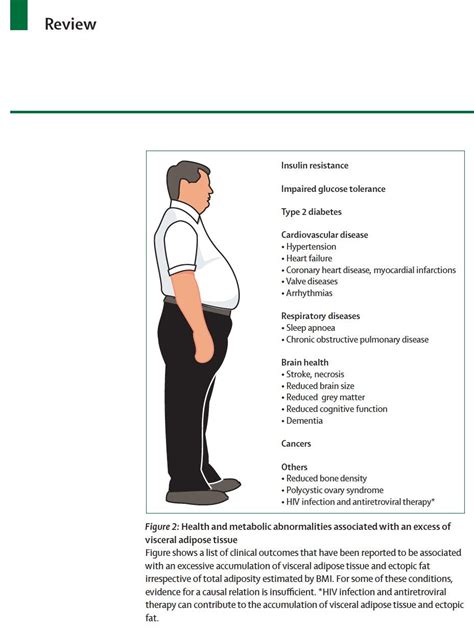Visceral fat, often referred to as “hidden fat,” is a type of body fat stored deep within the abdominal cavity, surrounding crucial organs like the liver, pancreas, and intestines. For men, accumulating stubborn visceral fat poses significant health risks beyond just aesthetics, contributing to conditions such as heart disease, type 2 diabetes, and certain cancers. While subcutaneous fat lies just under the skin, visceral fat is metabolically active and can actively secrete hormones and inflammatory substances, making its reduction a critical goal for long-term health. Targeting this deeply embedded fat requires a comprehensive and consistent approach focusing on diet, exercise, and lifestyle changes.
Understanding the Dangers of Visceral Fat
Unlike the pinchable subcutaneous fat, visceral fat isn’t visible from the outside in the same way, but it contributes to a larger waist circumference and a “beer belly” appearance. Its primary danger lies in its metabolic activity. Excess visceral fat is linked to insulin resistance, higher blood pressure, elevated cholesterol levels, and increased systemic inflammation. Men naturally tend to store more fat viscerally than women, especially as they age, making proactive strategies even more crucial. Understanding its profound impact on health is the first step towards effectively combating it.

Dietary Strategies to Melt Visceral Fat
Nutrition is arguably the most potent tool in the fight against visceral fat. A diet rich in whole, unprocessed foods is fundamental.
- Prioritize Protein: Lean protein sources like chicken, fish, eggs, and legumes promote satiety, preserve muscle mass (which boosts metabolism), and have a higher thermic effect than fats or carbs. Aim for protein with every meal.
- Embrace Fiber: Soluble fiber, found in oats, beans, fruits, and vegetables, forms a gel-like substance in the gut, slowing digestion, promoting fullness, and reducing the absorption of dietary fat. It’s particularly effective at reducing visceral fat.
- Limit Refined Carbs and Sugars: These contribute to rapid blood sugar spikes, promoting insulin resistance and fat storage, particularly visceral fat. Cut down on sugary drinks, pastries, white bread, and processed snacks.
- Choose Healthy Fats: Incorporate monounsaturated and polyunsaturated fats from avocados, nuts, seeds, and olive oil. While calorie-dense, these fats are crucial for hormone production and overall health, and can help with satiety.
- Mindful Calorie Intake: While quality matters most, a moderate caloric deficit is necessary for any fat loss. Focus on nutrient-dense foods that naturally keep you full.

Exercise Regimens for Visceral Fat Reduction
While you can’t spot-reduce fat from specific areas, a consistent exercise routine effectively targets overall fat loss, including visceral fat.
- Cardiovascular Exercise: Aim for at least 150 minutes of moderate-intensity aerobic activity or 75 minutes of vigorous activity per week. This includes brisk walking, jogging, cycling, or swimming. High-Intensity Interval Training (HIIT) — short bursts of intense exercise followed by brief recovery periods — is particularly effective for burning calories and visceral fat.
- Strength Training: Incorporate full-body strength training at least two to three times per week. Building muscle mass increases your resting metabolic rate, meaning you burn more calories even at rest. Compound exercises like squats, deadlifts, presses, and rows are excellent for this.
- Consistency is Key: The most effective workout plan is one you can stick to. Find activities you enjoy to ensure long-term adherence.

Crucial Lifestyle Adjustments
Beyond diet and exercise, several lifestyle factors significantly influence visceral fat accumulation.
- Stress Management: Chronic stress elevates cortisol levels, a hormone that promotes visceral fat storage. Practice stress-reduction techniques like meditation, yoga, deep breathing exercises, or spending time in nature.
- Adequate Sleep: Lack of sleep disrupts hormones that regulate appetite and metabolism (ghrelin and leptin), leading to increased calorie intake and visceral fat gain. Aim for 7-9 hours of quality sleep per night.
- Limit Alcohol Intake: Excessive alcohol consumption, particularly beer and sugary mixed drinks, can contribute significantly to visceral fat, often leading to the classic “beer gut.” Moderation is key.

The Path to Sustainable Reduction
Targeting stubborn visceral fat is a journey that demands patience and consistency. There are no quick fixes; sustainable results come from adopting a holistic and long-term approach to health. Regularly monitor your waist circumference as an indicator of visceral fat loss (a healthy waist for men is typically less than 40 inches). It’s also advisable to consult with a healthcare professional or a registered dietitian, especially if you have underlying health conditions, to create a personalized plan. They can provide guidance and ensure your efforts are safe and effective.

Conclusion
Reducing stubborn visceral belly fat is one of the most impactful steps men can take to safeguard their long-term health. By combining a nutrient-dense diet, a consistent exercise routine, and mindful lifestyle adjustments, you can effectively diminish this dangerous fat and significantly lower your risk of chronic diseases. Commit to these changes, be patient with your progress, and embrace a healthier, more vibrant future.




